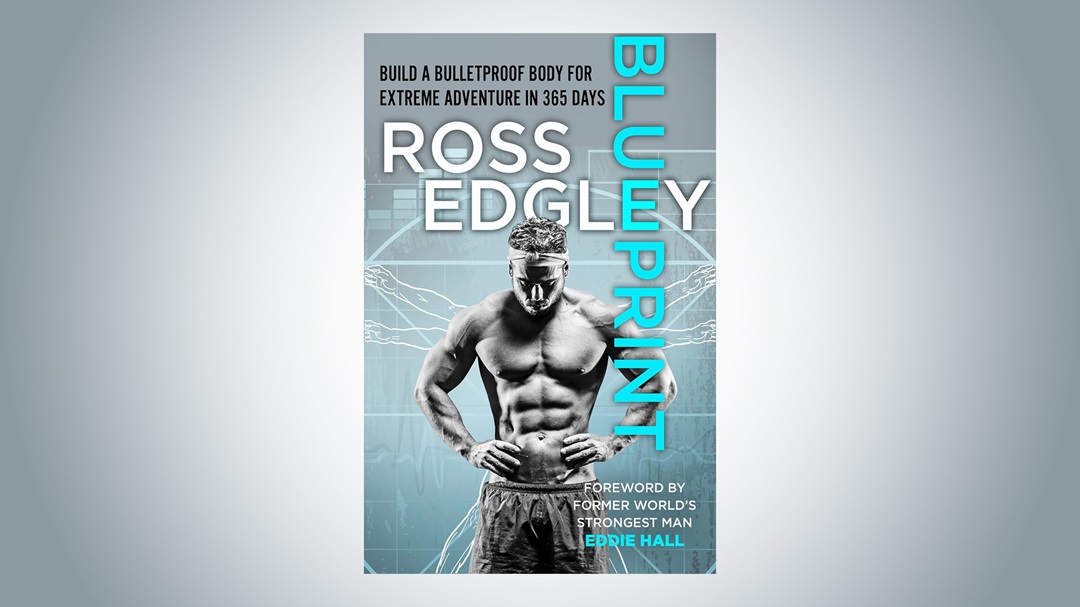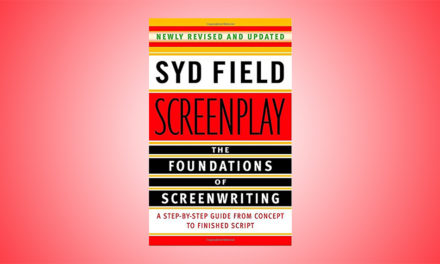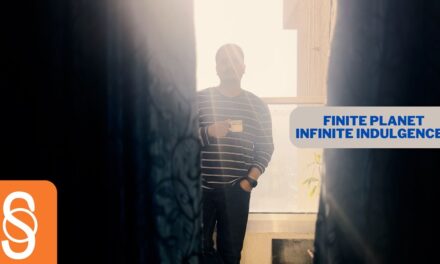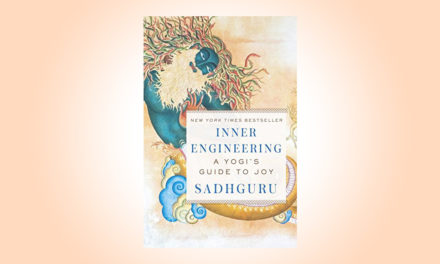I couldn’t have found Ross Edgley’s book Blueprint at a more appropriate time than now because I am going for an adventure of a lifetime of my own next year and this book promises to teach me how to build a bulletproof body for extreme adventure in 365 days.
And 365 days is what I got.
Before we dive into the review, first I will tell you who Ross Edgley is.
He is an athlete, ultra-marathon sea swimmer, and an author. With multiple world records to his name which are a testament to his near superhuman endurance, Ross is best known for completing the World’s Longest Staged Sea Swim in 2018, when he became the first person in history to swim around Great Britain. There he spent nearly 6 months at sea, 157 days to be precise, and swam 1,780 miles (2,860 km).
Another astonishing feat he accomplished is called the “World’s Longest Rope Climb” where he completed a rope climb of 8,848 meters (29,029 ft), matching the exact height of Mount Everest in a grueling 19 hours and 54 minutes.
With such a wealth of unparalleled extreme adventure experience, Ross decided to document his expertise in redefining what the human body is capable of through proper training and nutrition.
That resulted in his three books: ‘The World’s Fittest Book’ (2018), ‘The Art of Resilience’ (2020), and ‘Blueprint’ (2021)) which cover his theories and strategies for achieving peak performance and conditioning.
Blueprint is the latest one and the one I have read so far.
I got introduced to Ross Edgley through Chris Hemsworth’s show Limitless where he can be seen training Chris for two amazing athletic feats.
That made me look him up on Google and that ultimately led me to buy this book.
So, did this book succeed in teaching me how to build a bulletproof body for extreme adventure in 365 days?
Find that out in the review below.
What is Covered in the book Blueprint by Ross Edgley
Written in bold on the back cover of the book Ross Edgley says “A training plan is for achieving success. A blueprint is for achieving sustained, repeatable, lifelong success.”
In this book, he aimed to give us tried and tested principles of strength, conditioning, and rehab that will help us build our own customized training plans, suitable for our individual bodies and their current conditioning rather than giving us a blanket fitness routine.
The book is divided into 5 parts.
- Why We Adventure
- How to Adventure
- When to Adventure
- Where to Adventure
- Exercises | Coaching Cues
In the first part, Ross discusses a study that identified a gene that makes a certain proportion of the human population genetically predisposed to take risks and travel with a restless curiosity.
Commonly known as the wanderlust gene which makes these individuals less sensitive to dopamine.
This gene makes them seek more extreme experiences to feel exhilarated or satisfied in life.
As stated in the book, it’s possible that most of the exploration of Earth was carried out by our ancestors carrying this gene. Who crossed oceans, climbed mountains, and went to the remotest parts of the world.
However, Ross states in the book that even those not predisposed to adventure need it, perhaps even more, to break out of their comfort zones.
Then he explores “Eustress”, which refers to good stress, and “Eudaimonia”, a concept that suggests pain and struggle are integral to fulfillment. He also delves into “Askesis”, a Greek word that literally translates to training or exercise, which is now associated with asceticism and healthy hardship.
Combined, all three of them signify that manageable discomfort is necessary for growth. Akin to the famous ‘no pain, no gain’ adage often heard in gyms.
How to Adventure
After explaining why we adventure or why we should adventure the book moves on to the next part. How to adventure. It makes it clear that adventure is not possible without an able body. This is the part where the lentils (meat) of the book are located.
In this part, Ross clarifies that everyone is born with a certain genetic potential and the goal of training is to realize that potential.
The content of this part picks up after Ross Edgley’s superhuman swim around Great Britain where he emerged out of water after 157 days with squishy sea legs and a severely damaged shoulder joint.
Facing a possible end to his adventure career he drowned himself in research and professional consultation to figure out the best way to recover from his swim and prepare for a further lifetime of adventure.
The content of this part of the book is a result of that and his lifelong experience.
The training blueprint in the book is based on periodization and is broken down into three types of cycles.
The macrocycle, the mesocycle, and the microcycle.
The macrocycle, which is a year, is made up of 4 mesocycles broken into 4 seasons of the year, and the microcycle, a division of the mesocycle, is a phase of training that can range anywhere from a few days to 14 days. Commonly microcycles are week-long and are made up of interrelated training sessions that target one or more specific objectives.
Further, each of the mesocycle is aimed at a specific goal: recovery, base building, specialization, and peaking.
Each mesocycle is shown to have a different training intensity and volume based on its intended goal.
Concepts like “General Physical Preparedness” (GPP) and “(Sports) Specific Physical Preparedness” are discussed in relation to that.
Peaking is a section especially useful for those people who don’t have professional guidance at hand for special events and specific adventures.
I remember last year when I participated in my first 5K race, I found myself tired and out of fuel on the race day because of my training for the marathon. In my defense, there were several other factors that contributed to my fatigue, but it became clear to me that I needed to find a better way to train, recover, and physically peak on the right day to give my best.
Exercises and coaching cues are also provided at the end of each part of the book. I believe those who have not looked at fitness for developing physical functionality will find many useful tips and exercises to build just that.
Simple practices like brachiating and barefoot running are also discussed in the book from which I personally have benefited.
A couple of pages have straight-up guides for preparing for a marathon and a triathlon.
Because Ross Edgley himself is a swimmer a significant part of the book is dedicated to swimming.
He used it as an anchor to explain the blueprint of the book.
It covers some history of swimming, swimming techniques, and specific physical preparedness one can undertake to become a better swimmer. This also includes two stories of charity swims. Ross Edgley trained celebrities for one of them and undertook one himself.
I personally enjoyed this section for two reasons, one, I have started swimming again occasionally as a part of my fitness routine and it was great to get such useful coaching cues for it, and two, it also educated me on open water swimming, its challenges, and what our human body is capable of doing.
When and Where to Adventure
Well, where to adventure is a personal choice as you will see Ross exercise in the book but when to adventure is a question that every person who wants to adventure should deliberately contemplate.
Adventures a lot of times come unannounced as I have experienced myself a couple of times in my life but whenever it’s a deliberate choice you must define the why for it clearly.
Adventure for a cause is when Ross finds the best time to adventure in the book.
For the sake of its exhilaration, thrill, and experience are great reasons in themselves but I personally also connected with the fact that adventures can also be done to bring spotlight on the pressing issues of our time.
Two of them being the loss of biodiversity and climate change.
Well, everyone asks me why do you want to climb mountains. I have my reasons and answers for it but one day if my adventures give me a platform to speak, I will not forget to bring people’s attention to these two important issues and more.
Every adventurer I believe should think about this—a thoughtful point made in the book.
Who Should Read Blueprint by Ross Edgley
Having covered most of what is in the book I must say unless you are from the fitness industry you will learn a lot of new things from the book. Even if you are from the fitness industry, you will still find many insightful nuggets on the workings of the human body.
To someone like me who’s not from the fitness industry but learns a lot about health and fitness, this book still has lots of value to offer.
Beyond the practical information covered in its pages, the book is filled with immense inspiration and motivation to encourage you to maximize your body’s genetic potential.
The remarkable feats that Ross Edgley has achieved fill you with confidence in the human body and what it’s capable of achieving and withstanding.
Having this blueprint by your side gives you confidence in your training and helps you embrace the eustress associated with it.
Every weight you push, every kilometer you run, and every set you complete you know exactly where you are going and what you are achieving with it.
After returning to fitness and serious training following a long break of 3-5 years, where my body had reached its absolute base condition, I gradually started picking and applying concepts from this book to my training and started experiencing their benefits.
I got this book in Jan, exactly one week after I stepped back into the gym to start preparing for my adventure and I think it’s a great decision that I made.
Sure, you might find the concepts discussed in this book freely available on the internet but it will be rare to find it in one place and properly structured like this.
Therefore, I believe everyone should read it.
In the age of IT where most people sit all day for work, it’s essential to learn and apply the concepts in this book to maintain physical fitness and get inspired to challenge your comfort zone.
And especially those looking to adventure long into old age.
Speaking of old age and longevity, do check out my thoughts on Chris Hemsworth’s Limitless.
If you are a reader from the US you can purchase this book from Amazon by clicking here.
(This is an Amazon affiliate link which earns us a small commission without any extra cost to you and helps us run this website.)
Conclusion
I hope you found this review useful in making a decision about whether to get this book or not and learned a few other things along the way.
Even though this is a great book it’s not the be-all and end-all to fitness. There are many other important factors related to health and longevity.
I made a video on why you should exercise which discusses what should be the goal of exercise. Do watch it and let me know what you think.
Finally, for more such content keep coming back to soulomotivation.com and check out more book recommendations here.








